September 23, 1995: 0.2 inches of snow fell in the St. Cloud area. Source: MPX NWS.
September 23, 1985: Early snow over portions of Minnesota and western Wisconsin. Just under a half inch (.4) recorded at the Twin City Airport. Most of it fell during the afternoon.
September 23, 1937: From summer to winter. The temperature was 101 at Wheaton. Then a cold front came through causing the mercury to tumble below freezing.
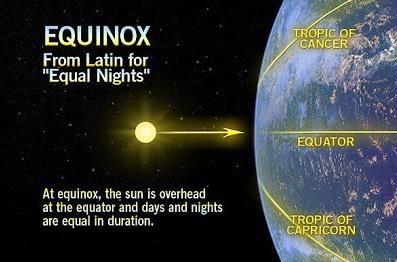
Autumnal Equinox
Maps Resemble Late August
“Summer ends, and Autumn comes, and he who would have it otherwise would have high tide always and a full moon every night” wrote Hal Borland. Autumn arrived, officially, at 3:21 AM, as the sun’s
direct rays fell on the Tropic of Cancer.
For the record, “meteorological autumn”, marking the end of the 90 warmest days, historically, came on September 1.
The calendar says fall, but summer is still simmering; excess heat from a jumbo El Nino brewing in the Pacific, and the warmest year on record, worldwide, will continue to flavor Minnesota’s weather. I still see a warm bias into spring of 2016. We will have winter, but odds are it won’t be as savage as usual in these parts.
Thunder-wear is recommended today; showers and T-storms are likely – today the wettest day in sight. A stretch of beautiful weather returns Friday into Sunday with highs near 80F.
A shower may pop up Sunday night, but another surge of warmth pushes the mercury past 80F again next week, based on the “Euro” model.
It was the 3rd best summer of weather since 1903. September has been just as amazing.

On Edge. The forecast called for morning clouds, then partly sunny by afternoon. Which sort of verified. But as you can see from the Tuesday afternoon visible cloud loop (via WeatherTap) stratus clouds were persistent much of the day over the metro, while St. Cloud enjoyed a glorious day.
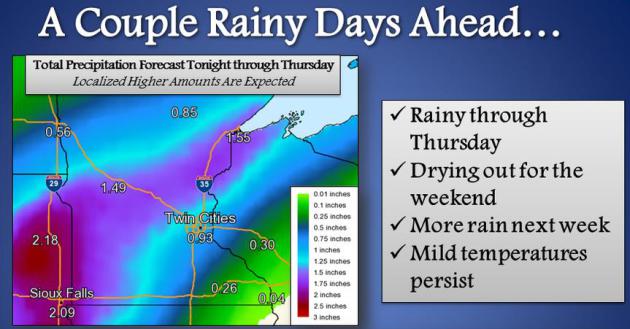
Soggy 36 Hours. Conditions are ripe for showers and thundershowers, some heavy, into early Thursday, with the heaviest amounts over central and southwestern Minnesota, where some 1-2″ rainfall totals can’t be ruled out. Map: Twin Cities National Weather Service.
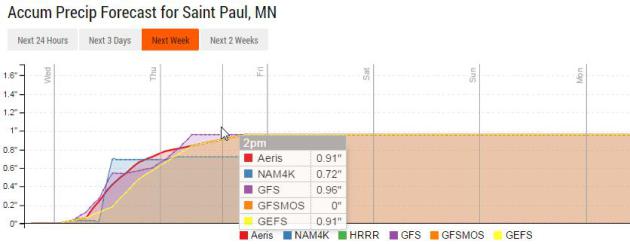
Drip Dries Will Be Drooping. Although it won’t be a steady, stratiform rainfall, the kind of rain you get in October or March, amounts may be significant; most NOAA models printing out nearly an inch of rain for St. Paul. Source: Aeris Enterprise.

Balmy Into Early Next Week. NOAA models show temperatures continuing to trend as much as 10-15F above average into the middle of next week, with a potential cool-down late next week. ECMWF guidance hints at unusually warm weather lingering all of next week with the warmest temperatures (more 80s?) midweek and late week. Place your bets.

Soggy Wednesday – More Whiffs of Summer Ahead. NOAA’s 10-Day GFS model shows a swirl of showers and possible thundershowers associated with a weak upper air disturbance irritating a nearby frontal boundary today, but skies slowly clear Thursday PM, setting the stage for generally fine weather Friday into much of Sunday. A stray shower or T-shower is possible late Sunday or Sunday night before a slightly cooler front arrives by Monday, but models warm things up again, possibly into the 80s, by the middle of next week.

Early October: Moderately Mild. I still don’t see a real cold front looking out 2 weeks or so. Beyond that the crystal ball gets a bit murky. But 500 mb winds Tuesday evening, October 6 show a zonal flow with temperatures at or just above normal for Minnesota; more 90s for the southern half of the USA.

Californians Fear El Nino’s Dark Side Will Bring More Trouble. Floods…in the midst of the worst drought in 500 years? It’s a distinct possibility as El Nino warming of the Pacific shifts the core of the jet stream, the main storm track, 500-1000 miles farther south than typical during the winter months. But will this pattern actually emerge in the coming months? Here’s a clip from Bloomberg Business: “…They weren’t touting it as the savior that will end the state’s four-year drought. Instead, they were looking at a darker scenario where the weather-changing phenomenon adds another year of dryness in the north while ravaging the south with floods. “What do you say when the governor asks you what to do? ‘You prepare for flood and drought because there is a possibility you can get both,”’ said Mike Anderson, state climatologist. While it bucks conventional wisdom, the scenario is a real possibility...”
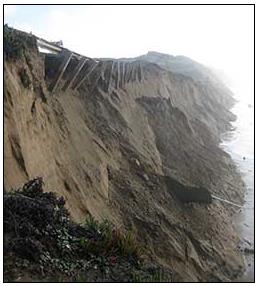
El Nino and La Nina Will Exacerbate Coastal Hazards Across Entire Pacific. USGS has the story; here’s a link and excerpt: “The projected upsurge of severe El Niño and La Niña events will cause an increase in storm events leading to extreme coastal flooding and erosion in populated regions across the Pacific Ocean, according to a multi-agency study published today in Nature Geoscience. “This study significantly advances the scientific knowledge of the impacts of El Niño and La Niña,” said Patrick Barnard, USGS coastal geologist and the lead author of the study. “Understanding the effects of severe storms fueled by El Niño or La Niña helps coastal managers prepare communities for the expected erosion and flooding associated with this climate cycle...”
Image credit above: “Severe bluff erosion, along the southern end of Ocean Beach, San Francisco, California, including damage to the guard rail of the Great Highway (Calif. Hwy.1). The severe winter erosion led to lane closures of the highway and an emergency, $5 million revetment along the base of this bluff. This storm damage occurred during the 2009-2010 El Niño, which, on average, eroded the shoreline 55 meters that winter.”
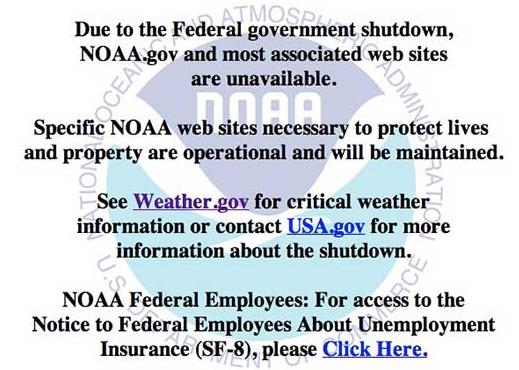
How Government Shutdowns Affect Weather Forecasting and Your Safety. Marshall Shepherd has an interesting post at Forbes; here’s the intro: “The movie Groundhog Day is the story of a TV meteorologist that gets stuck in a repetitive loop of his life. I am sure many federal meteorologists feel like the lead character as the threat of another government shutdown looms in the United States. It feels like I wrote a blog on this very topic a few years ago. Wait, I did. While I am not writing to debate the politics of a potential shutdown, it is important for the public to understand how weather forecasting and research is affected and potential consequences…”
Image credit above: “Notice on NOAA websites during the 2013 Government Shutdown.” Courtesy of NOAA website.
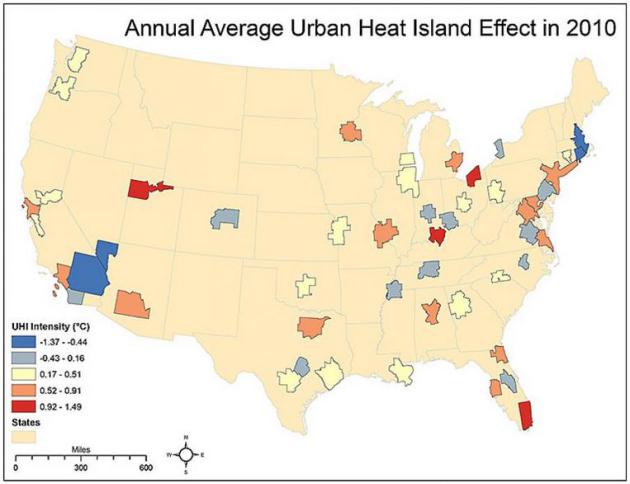
The Hottest Cities to Live – and Die – In. Takepart takes a look at how the urban heat island, coupled with warming from the climate system, is increasing the risk of heat-related ailments in America’s largest cities, including MSP. Here’s an excerpt: “…In a study recently published in the journal Computers, Environment and Urban Systems, researchers at the University of Georgia looked at the 50 largest metropolitan areas in the United States to see which cities were experiencing the most intense temperature changes owing to the UHI effect. Salt Lake City; Louisville, Kentucky; Miami; and Cleveland topped the list with jumps in annual temperatures between 0.92 degrees Celsius and 1.49 degrees Celsius in 2010 thanks to asphalt, density, and urban sprawl. Urban areas with increases between a half to nearly 1 degree Celsius included Los Angeles; San Francisco; Dallas–Fort Worth; Minneapolis–St. Paul; Detroit; Washington, D.C.–Baltimore; New York City; Philadelphia; Norfolk, Virginia; Birmingham, Alabama; and Jacksonville and Tampa, Florida…”
Map credit above: “This graphic shows the annual average urban heat island effect in 2010.” (Photo: University of Georgia)

NASA Tracks the Western Drought. Here’s an explainer from BBC News: “NASA satellite images from 1991 (left) and 2015 (right), show how drought in recent years has affected the water levels in the Lake Powell reservoir in the USA. The water levels are currently at around 42 percent of capacity. Picture released on September 17th.”

3-D Meteorological Experience: Tornado in the Cube. This is pretty cool, and it’s helping meteorologists better understand the dynamics of tornadogenesis. Here’s an excerpt from a2ru.org: “…The team re-created a tornado that happened in Moore, Oklahoma in 2013—a weather event that killed 24 people—using the data from the storm. Using the audio and visual capabilities of the Cube, researchers can penetrate the storm’s outside layers of rain, walking through to see what is happening at the center of the tornado. With this comprehensive view, researchers can better understand how tornadoes develop, allowing them to develop more accurate storm predictions and improve warning systems. The ultimate goal is to visualize weather events in real time, which would provide invaluable emergency management information…”

10 Years of Weather History in 3 Minutes. This YouTube animation from NOAA is pretty amazing: “NOAA’s GOES-12 satellite was decommissioned on August 16th, 2013 after 3,788 days in service. From April 2003 — May 2010, GOES-12 served as GOES East, providing “eye in the sky” monitoring for such memorable events as the 2005 Atlantic hurricane season and the series of blizzards during the winter of 2009-2010. After suffering thruster control issues, GOES-12 was taken out of normal service and moved to provide greater coverage of the Southern Hemisphere as the first-ever GOES South. During that time it provided enhanced severe weather monitoring for South America.…”
This animation shows one image from each day of the satellite’s life — a total of 3,641 full disk visible images.
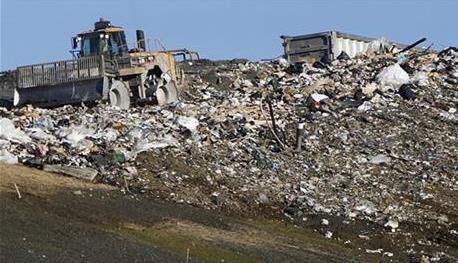
Study: Twice As Much Trash Put in Landfills Than Estimated. 1,871 pounds of trash per person into landfills as recently as 2013. Good grief. Here’s an excerpt from a story at AP: “...Researchers at Yale University looked at the records for more than 1,200 landfills and calculated amounts, predominantly based on weights. They figured it was 289 million tons in 2012, according to a study published Monday in the journal Nature Climate Change. For the same year, EPA estimated the figure to be 135 million tons. The Yale team calculated that in 2013, waste sent to landfills rose to 294 million tons. With 316 million people, that comes to 1,871 pounds per person in that year, the last for which there are figures…”
* TIME has additional perspective on a growing problem with trash.
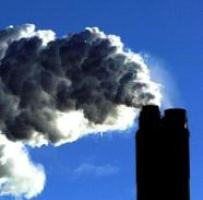
Minnesota’s Prescription for Cleaner Power: Make Sure Public-Health Aspect is Considered. MinnPost has the story – here’s a link and excerpt: “…A closer look at the Clean Power Plan underscores McCarthy’s point. Steps taken to reduce carbon pollution will have the co-benefit of significantly reducing primary air pollutants like particulates and ground-level ozone that we know are a risk to human health. These reductions are projected to prevent up to 3,600 premature deaths, 90,000 asthma attacks and 300,000 days of missed work and school. A Minnesota Department of Health report recently estimated that air pollution is responsible for 2,000 premature deaths, 400 hospitalizations and 600 emergency room visits in the Twin Cities in a single year. As the health risks of climate change and traditional air pollutants become better understood, more health organizations are stepping up to support the Clean Power Plan…”

Layoffs Are Coming to ESPN. The disruption to the cable bundle continues; here’s an excerpt from thebiglead.com: “Layoffs are coming to ESPN. Multiple sources inside and outside of ESPN tell The Big Lead that the network will be laying off “200 to 300” employees in the coming months. These are the first ESPN layoffs since 2013, and might not be the last, as Disney has notified ESPN to trim $100 million from the 2016 budget and $250 million in 2017. An ESPN spokesman sent the following statement to The Big Lead about the impending layoffs: “ESPN has historically embraced evolving technology to smartly navigate our business. Any organizational changes will be announced directly to our employees if and when appropriate...” (Variety has more perspective here).

Streaming Music Passes Physical Sales For First Time. Disruption continues in the music industry. Or as someone said recently, “There is no music industry, only Taylor Swift”. Here’s a clip from Bloomberg Business: “Streaming music is officially a bigger business than physical music sales in the U.S. for the first time, according to new data released today by the Recording Industry Association of America. If current trends continue, streaming will surpass digital download sales as the biggest single source of revenue for the music industry by next year…”
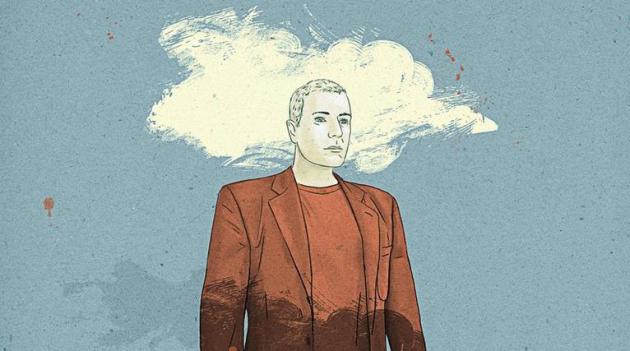
Wherever You Go, Your Personal Cloud of Microbes Follows. I took a second shower after reading this story at NPR; here’s an excerpt: “…The findings from Meadow and his colleagues were published Tuesday in the journal PeerJ. Each of us carries around millions of microorganisms – including bacteria, fungi and viruses — on the inner and outer surfaces of our bodies. Most of them aren’t dangerous. In fact, growing evidence indicates that they help us in lots of ways. Scientists call this collection of organisms our microbiome…”
Illustration credit above: Thomas Kuhlenbeck/Ikon Images/Corbis.


THURSDAY: AM shower, then clearing. Winds: SE 7-12. High: 74
FRIDAY: Partly sunny and pleasant. Wake-up: 58. High: 79
SATURDAY: Warm sun, no complaints. Wake-up: 59. High: near 80
SUNDAY: Warm sun, late thunder? Wake-up: 60. High: 82
MONDAY: Sunny, breezy and cooler. Wake-up: 58. High: 71
TUESDAY: More mild sunshine. Wow. Wake-up: 56. High: 74
Climate Stories….
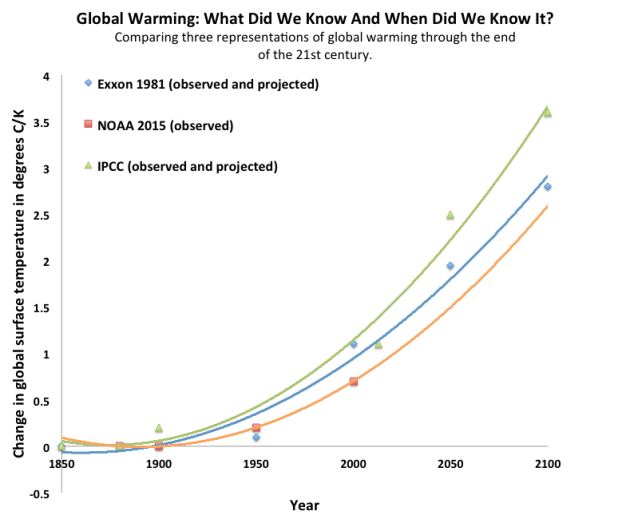
Exxon Confirmed Global Warming Consensus in 1982 with In-House Climate Models. Here is the third installment of the series from InsideClimate News: “Steve Knisely was an intern at Exxon Research and Engineering in the summer of 1979 when a senior vice president asked him to analyze how global warming might affect fuel use. “I think this guy was looking for validation that the greenhouse effect should spur some investment in alternative energy that’s not bad for the environment,” Knisely, now 58 and a partner in a management consulting company, recalled in a recent interview. Knisely projected that unless fossil fuel use was constrained, there would be “noticeable temperature changes” and 400 parts per million of carbon dioxide (CO2) in the air by 2010, up from about 280 ppm before the Industrial Revolution. The summer intern’s predictions turned out to be very close to the mark.…”
Graphic above courtesy of Greg Laden, who has additional perspective in this blog post: “…Notice that Exxon 1981 had it right. The revelations of the Exxon research, and the fact that it was kept secret and all that, is an interesting story. And, that story will develop over coming days, week, and months. But I don’t want to lose track of the other story, in some ways even more interesting. How surprised should we be, after all, that a major corporation would both look into and ignore, possibly even repress, the science associated with their primary activity? Not at all, really. But what is surprising is that we (and by “we” I mean scientists who have studied climate change) have understood the basic problem for a very long time, and decades of research have confirmed early findings, and of course, added important details….”
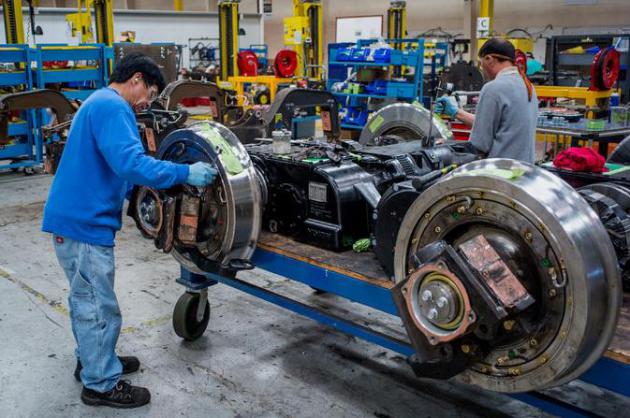

Green Group: Fossil-Fuel Phase-Out Possible by 2050. Here’s a clip from a story at TheHill: “The world could completely phase out fossil fuels and use only renewable energy by 2050, activist group Greenpeace concluded in a new report. In a joint project with the German Aerospace Centre, Greenpeace concluded that the 2050 timeline would create jobs and be cost competitive when compared with a continued reliance on fossil fuels. “We must not let the fossil fuel industry’s lobbying stand in the way of a switch to renewable energy, the most effective and fairest way to deliver a clean and safe energy future,” Greenpeace International Executive Director Kumi Naidoo said in a statement…”
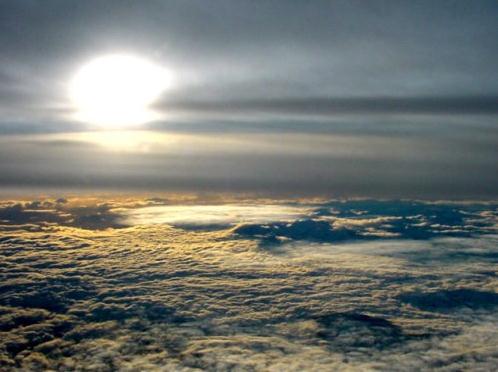
Taking Responsibility for the Future. The author of this Op-Ed is a Montana resident but his words resonate; here’s an excerpt from Independent Record: “…Most challenges are opportunities in disguise. Montanans have a long history of pioneering innovative solutions through taking on big challenges. Like generations before us laying the foundations impacting our lives, our willingness to courageously address one of the most important challenges of our time will impact the quality of life for us, our children and grandchildren. Seizing opportunity, leading instead of following, pioneering a better future — that’s the Montana way. Montanans know we didn’t leave the Stone Age for lack of stones.”

Dear Pope Francis: Use Capitalism to Fight Climate Change. Here’s an excerpt of an Op-Ed at Forbes: “…Freeing up the private sector should mean much increased production, and lower prices, which would allow the generation of cheap power from natural gas fired power plants, and the displacement of coal. Whether it would reach US levels (consumption has dropped by roughly 300 million tons in seven years) is not important. Significant progress could be made at little or no cost, and possibly a profit to the economy and government.”
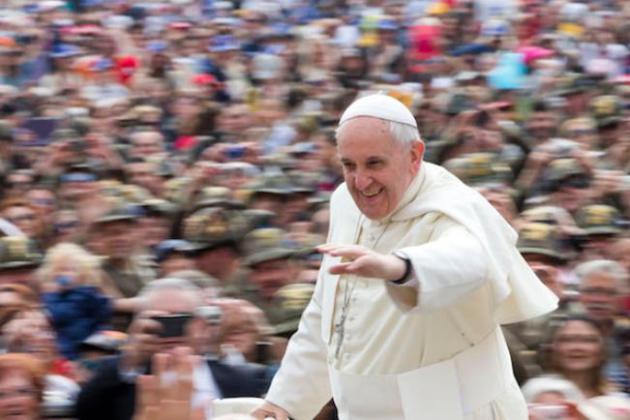
Pope Heads to Climate Talks as Rare Word – Optimisim – Surfaces. Bloomberg Business has the story – here’s an excerpt: “…After years of diplomatic jockeying, “there finally is momentum,” said David Waskow, director of climate initiatives at the World Resources Institute, a Washington-based research group. “The arrows are all pointing in the right direction.” The turnaround’s come amid a host of developments: a half-decade of increasingly irrefutable science pointing to the dangers of a warmer world, from extended droughts to rising sea levels and raging forest fires; a veritable revolution in clean energy that’s offered more affordable alternatives to fossil fuels; and years of diplomacy designed to bring fast-growing nations like China and India into the fold for pollution limits…” (File photo: AP).
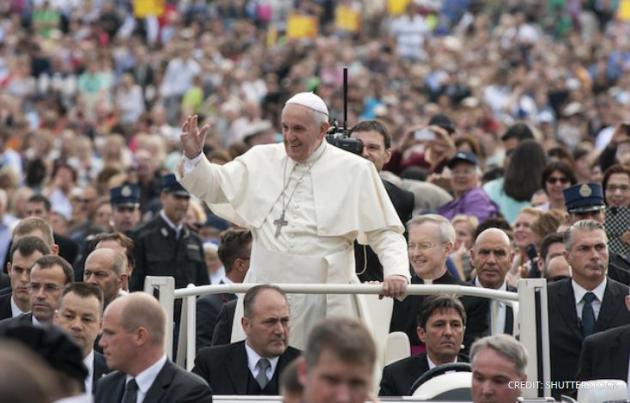
Pope Francis Attacked by Climate Deniers Over Support for Accurate Science. ThinkProgress has the story; here’s a clip: “…George Will, the Donald Trump of deniers, wrote of the Pope, “Americans cannot simultaneously honor him and celebrate their nation’s premises.” In other words, all you folks out there who honor the Pope, Will wants you to know that you really hate America. The Heartland Institute’s marketing director, Gene Koprowski, actually said that he and his colleagues believe the Pope is motivated by “pagan remnants” of “nature worship” reasserting themselves in the Catholic Church…” (Photo: Shutterstock).

Why The Pope Should Scare Climate Change Deniers. Here’s an excerpt from a New York Times article: “…The pope’s comments clearly have not convinced Representative Gosar, but they may be influential for others. David T. Buckley, a professor of political science at the University of Louisville, used data collected by YouGov to examine the effects of the pope’s statements on Catholics. He found that for Catholics who attend church weekly, the pope’s encyclical on the environment was significantly more influential than an article citing climate-change experts. Fifty-four percent of such Catholics assigned to read the pope’s comments agreed humans were responsible for climate change, compared to 41 percent of those who read the experts’ take. And 84 percent of pope-readers said humans have a moral duty to take care of the environment, compared with 75 percent of expert-readers...”



Why Trust Climate Models? It’s a Matter of Simple Science. Ars Technica has a post that clears the air on what climate models can and can’t do – here’s an excerpt: “Talk to someone who rejects the conclusions of climate science and you’ll likely hear some variation of the following: “That’s all based on models, and you can make a model say anything you want.” Often, they’ll suggest the models don’t even have a solid foundation of data to work with—garbage in, garbage out, as the old programming adage goes. But how many of us (anywhere on the opinion spectrum) really know enough about what goes into a climate model to judge what comes out? Climate models are used to generate projections showing the consequences of various courses of action, so they are relevant to discussions about public policy. Of course, being relevant to public policy also makes a thing vulnerable to the indiscriminate cannons on the foul battlefield of politics...”
Image credit: “Model simulation showing average ocean current velocities and sea surface temperatures near Japan.” IPCC

